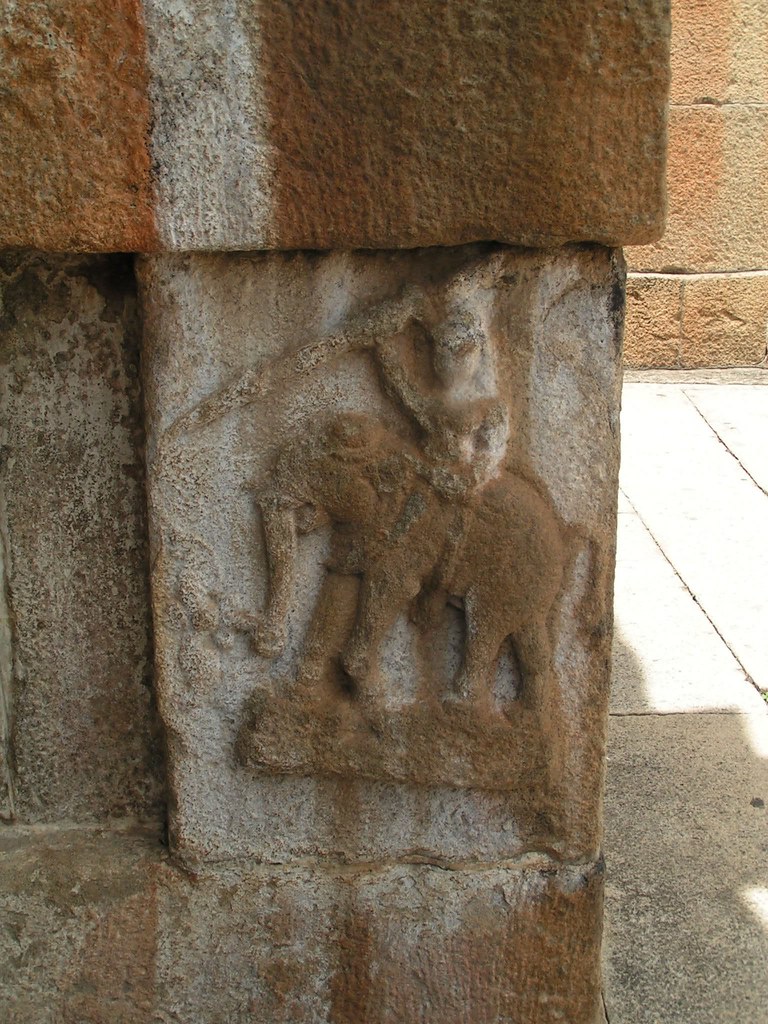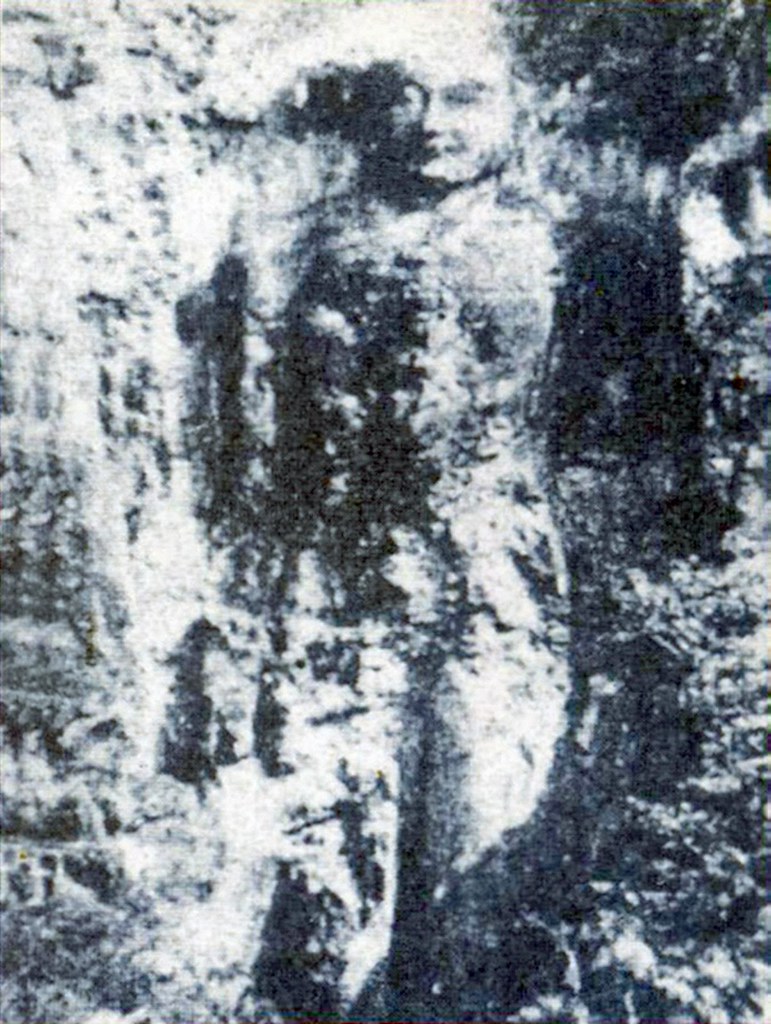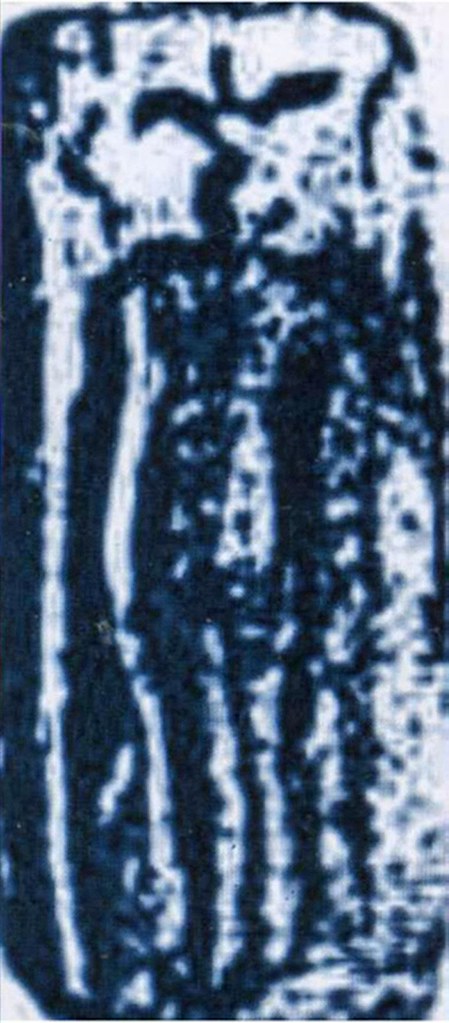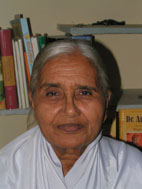In the second stage of stone art only the rock just around the image was chiseled away to make it more prominent, but in the third phase the artists moved on to figures with more natural proportions. The rock around the figure was now removed to a regular depth, so that the figure itself emerged as a clear haut relief in a sufficiently deep niche - see the photo of the elephant on the doorpost (photo 17; in this case the niche’s edge has been removed too). The temple of Chandraprabhu, the 8th Tīrthamkara, with its manastambha (“ego-pillar”) was also built according to this principle. This stage of art reached an ever greater perfection. People started to adorn the icons with attributes and ornaments (photo 19).
 Elephant; early 3rd phase of art; Vindhyagiri
Elephant; early 3rd phase of art; Vindhyagiri
photo 17
Elephant; early 3rd phase of art; Vindhyagiri
 The icon of Chandra Prabhu; Vindhyagiri
The icon of Chandra Prabhu; Vindhyagiri
photo 19
The icon of Chandra Prabhu; Vindhyagiri
 Rishabha, 47 m high, next to Indus seal of about 5cm
Rishabha, 47 m high, next to Indus seal of about 5cm
photo 20 + 20A
Rishabha, 47 m high, next to Indus seal of about 5cm
One of the small seals found in Pakistan shows a standing Jina in this art style which reminds us of the 47 meter high Jina named Bavangoja of untold age in the rocks near Malva close to Indore, in Madhya Pradesh (Middle India). This old photo shows the situation several decades ago (photo 20, and 20A). Now the image has been plastered over and has lost its antiquity or beauty. This third style phase is also found in the Sittanvasal caves in Tamil Nadu in South India, but these are of a later period. In a rock-cut veranda there is a Suparśvanāth (7th Tīrthamkara) and a monk with one umbrella. Inside the cave are three icons of siddhas chiseled from the same mountain rock, including an umbrella; a notable acoustic effect is that the OM sound when spoken in that corner resounds a long time. All these developments in art took place before the Harappan culture. Some of the sculptures on the two mountain peaks called Māngi (and) Tungi near Nasik in the province of Maharashtra represent this artistic stage as well, but the art is badly weathered.
 Dr. Sneh Rani Jain
Dr. Sneh Rani Jain
 Publisher:
Publisher: